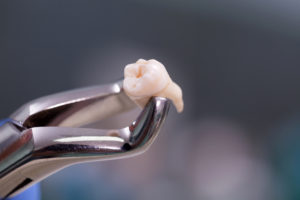 Every dentist in the world tries to drive home the idea that flossing is crucial for overall dental health. But flossing is more important to a person’s overall health than just making those pearly whites gleam, and one study has actually proven that there could be some significant health problems down the line if a person forgoes flossing every day.
Every dentist in the world tries to drive home the idea that flossing is crucial for overall dental health. But flossing is more important to a person’s overall health than just making those pearly whites gleam, and one study has actually proven that there could be some significant health problems down the line if a person forgoes flossing every day.
Researchers at the Chung Shan Medical University in Taichung City, Tawain, have recently released a report linking the development of chronic gum inflammation, also known as periodontitis, to Alzheimer’s disease.
Alzheimer’s disease is a chronic disease that destroys memory and other cognitive functions. It is quite widespread. In fact, more than 5 million people in the U.S. are living with some stage of Alzheimer’s. And while the researchers weren’t able to find a direct link to the formation of the disease and chronic periodontitis, they believe the increased amount of inflammation in the body can be detrimental and lead to a decline in overall thinking ability.
For the study, the team looked at Taiwan’s National Health Insurance Research Database to examine the health history of patients over 50. They focused on patients with chronic periodontitis and discovered that those with chronic gum inflammation for 10 or more years were a staggering 70% more likely to develop Alzheimer’s disease than those without periodontitis.
Additionally, this link stayed the same even after the researchers adjusted their search results to account for some other factors that may influence the development of Alzheimer’s, such as the patient’s susceptibility to heart disease, stroke, or diabetes.
Interestingly enough, the researchers are unsure where to go when it comes to this data. Dr. Yao Leira Feijoo from the Universidad de Santiago de Compostela in Spain, who wasn’t included in the study, explains to the Huffington Postthat:
?In fact, it is believed that the association between periodontitis and Alzheimer?s disease may be bi-directional. Currently, with the scientific evidence that is available, we cannot be sure if the risk factor is either periodontal disease or Alzheimer?s disease. Because periodontitis is a preventable and treatable disease, periodontal patients should be aware of the potential risks of gum infection and the systemic impact that could have.”
Luckily enough, there are some interesting dental innovations that could cut the risk of people developing periodontal disease. One example is the laser-assisted new attachment procedure, LANAP protocol, which uses a dental laser cutter to help remove plaque and dead tissue between the teeth and gums. It is meant to kill the germs that cause periodontitis, while still keeping healthy tissue unaffected.
The procedure for this is simple — the dentist will use a tool that looks similar to a metal dental floss pick and swipe the laser through your teeth. And not only will it make it easier to get teeth clean, it is quite easy to clean itself. Typical dental instruments require sterilization machines like autoclaves which require regular testing and servicing, but this laser is quite a new spin on what constitutes “traditional” dental instruments.
There are hopes that the LANAP protocol will be enticing enough for patients to participate in. Considering the fact that while 80% of the U.S. adult population suffers from some type of periodontal disease only 3% accept treatment, this new procedure may be in the best interests of countless people worldwide.




